
December 7, 2021 – Freelancers and Independent Contractors Beware: Build Back Better Vows to Impose the PRO Act Which Threatens Your Livelihood
The freedom to work as a freelancer or independent contractor provides flexibility for households and vibrancy to the American economy. It is tailor-made for architecture and design practices and freelance architects seeking to fill the peaks and valleys standard in architecture practices.
The PRO Act bans Right to Work laws nationwide. Still, it also imposes the same independent contractor/freelancer-destroying policies of California’s AB5 law, which has destroyed countless lives and driven people out of the Golden State.
Freelancers and independent contractors want to be their bosses. AB5 and the PRO Act dictate they must have a boss. Households need greater flexibility than ever after the changes brought about by COVID in the workplace.
I have been fighting my whole professional career for the right to freelance and become an independent contractor. We need to rally the political wing of AIA.org and ask their Advocacy group to engage and lobby against this provision of the Build Back Better bill.
Act Now Contact Sarah Dodge, AIA, Senior Vice-President of Advocacy & Relationships, and ask her to put the full force of the AIA’s advocacy group behind removing the AB5 provision out of Build Back Better!
[email protected]
Partial hat tip to the Freelancers Union
Freelance Community
|
AB5 Law, AIA.org, American Institute of Architects, architects, architecture, architecture practices, Build Back Better, Consulting For Architects, COVID, David McFadden, design, economy, Freelancers, freelancing, Independent Contractors, jobs, Livelihood, Pro Act, Workplace
|
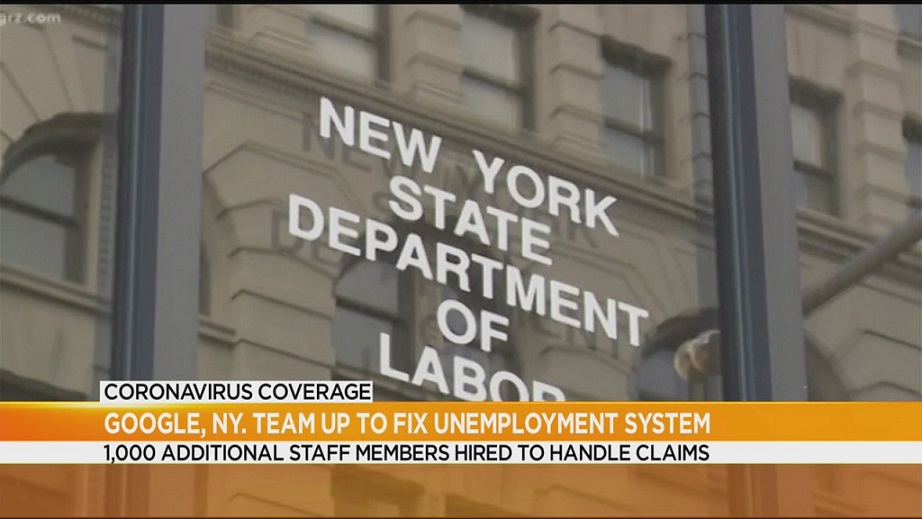
Self-employed workers and independent contractors now qualify for the Pandemic Unemployment Assistance program.
On Monday, Cuomo announced the state would be partnering
with Google to create a new website that would help streamline the application
process for those still seeking to file a claim.
The website was expected to launch last night, but instead,
it launched Friday morning at 7:30.
It can be accessed by going to unemployment.labor.ny.gov.
To sign in, you will need to enter your ny.gov ID information or create a new account.
From there, users will be asked to fill out an application and
submit any required documents through a secure online portal.
If you have problems with your current account or issues
with creating one, you can call 800-833-3000 for assistance.
Anyone who partially completes their application will be
contacted by a service representative within 72 hours.
How does the callback
system work?
After applying, a state representative will reach out within
72 hours to complete your claim.
Those who have filed a claim and were told to call the
unemployment hotline to complete their application should stop calling and wait
to be contacted, according to the Department of Labor.
“Anyone who was already in the process of filing an application, whether by phone or online and was told to call back to complete their claim will not have to call back,” Deanna Cohen, a spokeswoman for the department, said in an email Friday.
A total of 810,000 have filed an unemployment claim as of
Thursday, Melissa DeRosa, Cuomo’s top aide, said.
Around 600,000 of those claims have been fully completed and
another 200,000 are in partial status.
The state is in the process of completing those claims.
A total of 6,000 people have been contacted under the new
call system as of Friday morning, DeRosa said.
I’ve applied using
the old site. Should I do so again?
No.
Claims filed using the old website are still being processed
and anyone who was told to call the state’s unemployment hotline to complete
their application should stop calling.
A representative from the Department of labor will instead
contact you within 72 hours.
What’s the best way
to apply?
The state is urging all those looking to apply for benefits
do so online and wait to be contacted by a representative.
But calls are still be accepted through the state’s unemployment
hotline at 888-209-8124.
To better process claims by phone, the state has started fielding calls seven days a week and has implemented a filing system by the last name.
Hours for the call center are Monday thru Friday: 8 a.m. to 7:30 p.m., and Saturday and Sunday from 7:30 a.m. to 8 p.m.
The filing system by the last name goes as:
A-F: Monday.
G-N: Tuesday.
M-Z: Wednesday.
What do I qualify
for?
A number of unemployment benefits have been extended to
those who normally would not qualify as a result of the federal Coronavirus
Aid, Relief, and Economic Security Act, or CARES Act, a $2.2 trillion stimulus
package approved by Congress last month.
New York provides up to $504 a week for unemployment, based
on a person’s salary.
Self-employed workers and independent contracts now qualify
for the Pandemic Unemployment Assistance program.
But individuals cannot apply for PUA until it is determined
they do not qualify for regular unemployment benefits.
That requires an extra step.
First, a person must file a regular unemployment claim through the state’s Department of Labor.
Once it’s determined they do not qualify, they can then
apply for PUA through the state.
To apply, visit unemployment.labor.ny.gov.
What else do I get
under the CARES Act?
Those who qualify for unemployment benefits will also
receive an additional $600 a week from the federal government through July 31.
In addition, the federal government is in the process of
sending out a one-time stimulus check to nearly all Americans.
Most individuals
COVID-19 Update
|
architects, architecture, cares act, covid19, department of labor, Google, governor cuomo, Independent Contractors, Interior Designers, jobs, new york city, Self Employed, unemployed architects, unemployment, unemployment assitance, unemployment benefits, unemployment insurance
|
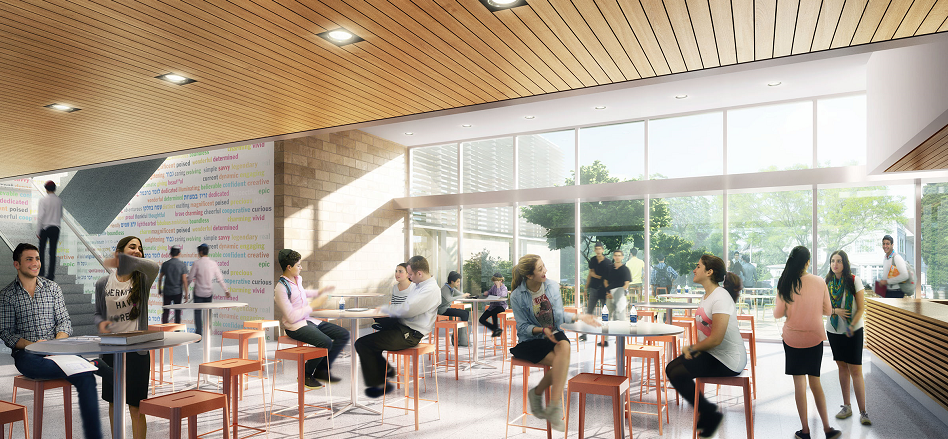
Hiring Millennials
Baby boomers are retiring in record numbers, and their millennial replacements are very different in terms of personal characteristics, as well as job and workplace expectations. Millennials, aged 18 to 34 years old, already makeup more than one-third of the workforce. By 2025, they will account for close to 75 percent. Architecture firms are now in an intense competition to attract and retain qualified millennial professionals. Understanding the millennial perspective and developing a suitable workplace environment are imperatives for business sustainability.
Characteristics of Millennials
Millennials are one of the most analyzed generations because of their complexity. They are the first generation of digital natives, and technology has enormously influenced their expectations. For example, they are driven by a need for social connectedness and have integrated technology deeply into their personal lives. As such, they now expect the same in their work lives. CISCO calls it the “new workplace currency,” since 56 percent of college students surveyed said they would not accept a position at a company that banned access to social media.
Millennials have high expectations. They want higher pay based on skills sets and faster promotions. They believe the firm should provide appropriate leadership development and have values that match their own. If the business fails to meet these expectations, the employee will leave. Millennials are not interested in plugging along doing eight hours of mundane routine work they see as having little social impact. They want to do meaningful work that is clearly connected to solving complex societal problems.
Millennials are optimistic about the future and are a diverse generation, with over 44 percent identifying with an ethnic group or a minority race, according to theU.S. Census Bureau. They are content creators, thriving on collaboration. They also want work-life balance, which for the millennial may mean using remote-work technology. A 2015 CISCO survey found that over half of Gen Y (millennials) and Gen X (generation sandwiched between baby boomers and millennials) consider themselves accessible for work 24/7.
Perhaps the most important characteristic to understand is that millennials want to work for companies that reflect their personal values. A Deloitte survey found that 56 percent of millennials had ruled out working for an employer because their values were in conflict. This is perhaps one of the most difficult concepts for traditional organizations to master.
Why are You Leaving?
Understanding the top reasons millennials change jobs provides a knowledgeable foundation for developing recruiting and retention strategies. Consulting for Architects, Inc. (CFA) conducted a survey which asked architecture and design firms to rank, in descending order of importance, the reasons employees aged 18 to 35 years old left their firms. The results are revealing and support much of the academic and business research and studies conducted over the years to identify millennial characteristics.
Ranking number one in the CFA survey as the top reason for millennial turnover is concern about the lack of opportunities for career advancement. Number two is a desire for more challenging work. Number three is dissatisfaction with the leadership of senior management. Number four is disagreement with the overall direction of the organization. Number five is dissatisfaction with the compensation and benefits. Number six is unhappiness with the amount and/or type of rewards and level of recognition for contributions to the firm. Number seven is a desire to seek a better work/life balance.
It is not surprising the leadership of senior management ranks high because these are the people most responsible for the firm policies and procedures, business culture, and talent management system. Since many of the senior leaders are baby boomers, there is a generational difference in attitudes towards work, career, and the need for employee recognition. Baby boomer architects and designers spent many years doing low-level assignments, putting in many hours without regard for work/life balance. The rewards were the work itself and steady career advancement, and for some, reaching a point where it was possible to start a new business. Now baby boomers are managing organizations in which millennials already comprise or will soon comprise most of the workforce, and the younger generation wants change.
A good example of the generational difference is found in a blog written by a millennial architect. The title says it all – “Millennial Architect Won’t be Your CAD Monkey.” There have been other surveys conducted, and they support the CFA survey results and the need for senior leaders to adapt the work environment to meet the needs of the millennials. A 2012 survey, for example, found that millennials expected to stay in their jobs for less than five years.
Recruiting Millennials
The strategies for attracting and recruiting millennials specifically address their characteristics and the top reasons they leave architecture firms . First, it is important to develop a workplace culture that nurtures the millennial spirit and makes young architects believe this would be the best place to work. The culture must embrace diversity and cherish the organization’s brand and reputation. For instance, since millennials always check social networks for information, potential employers should take into consideration what current employees, clients and communities are saying about the company. Every architectural firm should regularly monitor and manage the online conversation concerning the organization. The online conversation coupled with the marketing strategies needs to demonstrate the architecture firm’s mission, values, ethics and beliefs, so that recruits will see that their personal values align with the organization’s values.
Technology plays a critical role in other respects. Video interviews can showcase an architecture firm as a progressive and flexible culture, and can often provide distinct advantages to both the firm and the interviewee. For the millennial, video interviews are also more convenient, as they get an opportunity to show their true character instead of only what is on the resume.
For the architecture firm, video interviewing saves time and money because the cost is much less compared to in-person interviews. It makes the hiring process quicker while also giving the interviewer an opportunity to explore facets of the person’s personality traits, something not possible with a written resume. Overall, video interviewing fits a modern workforce expecting efficient use of technology, flexibility and a willingness to collaborate for mutual benefit.
Other recruiting tools include developing a good pay and benefits package, supplemented with the presentation of career path opportunities that demonstrate potential upward mobility. Millennials who see a position as dead-end will either refuse a position or will accept the position only as a stepping stone for obtaining licensing.
Retaining Millennials
Millennials have been described as “children of the revolution.” The “revolution” is a shift in individual perspectives to a focus on the needs of the community. Millennials want to do meaningful work centered on people; therefore, one of the most critical retention strategies is developing work with these attributes. Tasks must allow them opportunities to work on projects that make a social impact, like environmental sustainability renovations, low-income housing solutions and disaster relief architecture.
The type of projects offered will influence the turnover rate. Research indicates that 91 percent of millennials expect to stay in a job for less than three years if the work is not challenging. They are entrepreneurial and will leave a boring job to start a new business in order to meet personal goals.
Architecture firms must rethink everything from work schedules to leadership training. Strategies include allowing flexible work that lets employees work within a loosely structured schedule. The 9-to-5 schedule is out. One of the ways personal and organizational values are integrated is by allowing employees time to take care of personal needs, like family or community projects. Ideally, the flexible schedule is coupled with the right to work remotely. They are as likely to be found reading and responding to work emails at 9 p.m. as they are at 9 a.m.
Professional development is also crucial. In the Deloitte survey mentioned earlier, six out of 10 millennials believe their companies do not fully develop their leadership skills. Yet, this is one of the most prized activities determining business value. Skills development involves a variety of activities, including training software, mentoring and collaborative teamwork. Millennials need and want a lot of support that encourages them to pursue leadership roles on teams, as well as over projects and departments.
Overhauling Business As Usual
Attracting, hiring and retaining millennials requires a complete overhaul of “business as usual.” All aspects of the talent management process should be viewed through the millennial lens with the ultimate goal of building a loyal, innovative workforce. Admittedly, the current disconnect between millennial expectations and the traditional architecture firm’s work structure is wide, so now is the time to begin making required changes. No one ever said it would be easy to move into the future – a future that is here now.
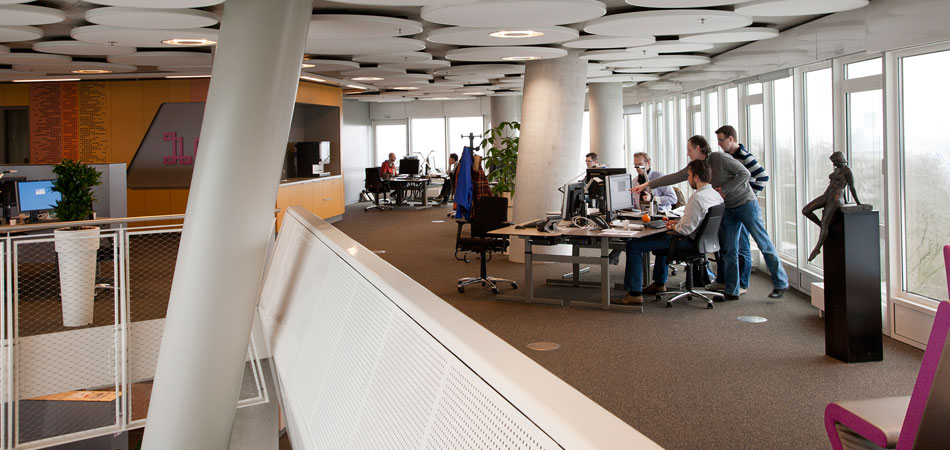
First, make an architecture or interior-design independent contractor into an employee by formalizing the person’s work arrangement and paying him or her regular wages. The IRS and its interpretation of payment and work plays the most important role in deciding a person’s status. At our staffing firm for architects and designers converting a independent contractor to a full-time employee is a third of our business.
Characteristics of an independent contractor
The IRS views an independent contractor as a person who works apart from the firm, and the rules governing them are not extremely clear cut. This wide room for interpretation has led to disputes in a number of workplaces. Fortunately, the status of an independent contractor is not as ambiguous as that of intern architect or draftsman.
By definition, an independent contractor is a person who has a significant amount of control over his or her work, achieves goals independently from the firm, doesn’t need to adhere to all the firm’s rules, uses his or her own equipment and doesn’t require close supervision by a member of the firm.
Characteristics of an employee
An employee must follow the set rules of the firm. He or she receives payment through a W-2 rather than a 1099 form. An employee uses the firm’s equipment to complete jobs, has a title with the firm and is subject to supervision by a member of the firm.
The transformation from contractors into employees
4 Key Points
- A person’s status changes when the firm takes them under its wing. Typically, this process involves the following aspects: training, giving the person authority to make decisions for the business, assigning the person key duties to perform and redefining the person’s work status as permanent, off-probation or retained for a set period of time. The process is complete when the new employee understands their work responsibilities and begins a project on behalf of the firm.
- It is critical that the person understand what it means when he or she has become an agent of the firm. The best way to accomplish this task is in writing. The new architect or interior designer and the owner of the firm should sign a letter of agreement stating the worker is now an employee.
- You can ratify and celebrate the change in a person’s status by providing them with business cards that state their title and contact information. Having a letter signed and dated by the owner that contains a start date is also helpful and thoughtful for those changing from independent contractors into employees.
- Finally, it is meaningful for the firm to circulate an internal announcement that they have hired the independent contractor as a full-time employee.
Source list:
http://www.cons4arch.com/
http://www.aia.org/akr/Resources/Documents/AIAB095064
https://www.mbopartners.com/resources/article/what-is-independent-consulting
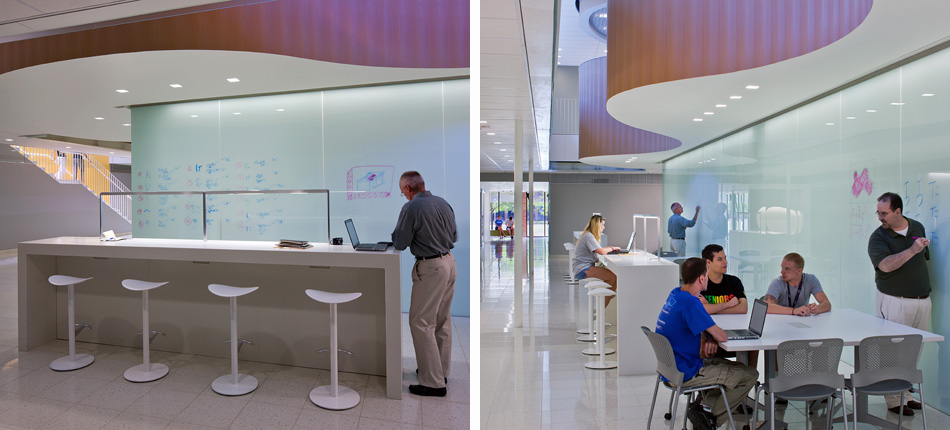
Reasons to be self-employed add up to 55! Taken by a poll of its readers, this list of reasons to be self-employed is the most thought out I have seen. It was written by By: Jennifer Good for The Self-Employed Website.
Being self-employed is one of the truest forms of freedom. In fact, when we polled TSE readers, flexibility and freedom were the number one responses as to why they loved being self-employed. While those reasons are often the tipping point for becoming “jobless,” there are indeed many other benefits to working for yourself.
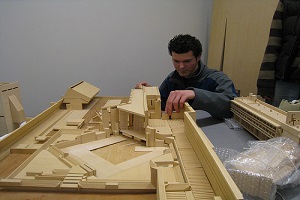
To celebrate the lifestyle of the entrepreneur, here is a list of our favorite reasons it’s better to employ yourself:
- Set your own hours.
- You are your own boss.
- Opportunity to make unlimited income.
- Can work from home.
- Can work literally anywhere.
- Are able to put family priorities first.
- You get the value that you create for yourself.
- You don’t just work for a paycheck.
- No office or corporate politics to deal with.
- Able to do something you are passionate about.
- Great tax benefits.
- Can work in your pajamas if you want to.
- No more dealing with traffic if you don’t want to.
- Take vacation or sick time whenever you need to.
- In today’s economy, being self-employed can have more job security than a traditional job.
- True control of your finances.
- You are able to do work you find truly rewarding.
- Learn more about yourself than any other “job” experience might offer.
- True flexibility in everything you do.
- Opportunity to surround yourself with people who you like to work with.
- More opportunities to spend time on perfecting your skills.
- Work doesn’t feel like work.
- Spend a few years working your butt off to reap rewards other people only dream of.
- Every day can feel like an adventure.
- You will get along with everyone in your office.
- Only you need to believe in yourself. You don’t have to sell your ideas or vision to higher-ups.
- Solopreneurs – You’ll always be employee of the month!
- You can set up your office however you want.
- Limit the amount of time you spend trading dollars for hours.
- Get paid while you’re sleeping with passive income opportunities.
- Gaining real world experience that will help your business versus limited job-only experience.
- Having a job can be more risky than being self-employed.
- You can fire your clients or customers if you don’t like them.
- You are not limited to the money you earn each paycheck.
- You are more likely to hang out with other entrepreneurs to help fuel the idea fire.
- Every day is like a new challenge – a chance to grow as a person.
- You can do something you’ve always dreamed about doing.
- You will be able to spend more quality time with your family.
- You can take control of your own personal and career development.
- You could become a thought leader for your niche.
- The more you put into your business, the more you will get out of it.
- You will be able to create a feeling of pride around your business and your accomplishments.
- You can earn as little or as much as you want.
- You will have more freedom to work, play or rest when you want to.
- You will have ultimate control over what projects you work on.
- Being self-employed is the ultimate DIY project.
- Have true control of your future.
- Can create multiple revenue streams.
- Your daily work can be as varied as you desire.
- You earn your income everyday.
- You can be yourself.
- Busy times are something you look forward to when you’re self-employed.
- Get to meet new people that you might not have in a typical job environment.
- You work to create results, not to impress people.
- You are 100% in control.
Weigh In: What’s your favorite reason for being self-employed?

Freelancers Union strongly supports the national effort to increase quality, affordable coverage for our members and all independent workers.
The current health care system is failing, and it hurts independent workers more than most.
Freelancers Union has been building solutions within, around, and despite our nation’s crippled health care and insurance system for over ten years. We have confronted some unpleasant realities along the way—from skyrocketing medical costs to an outdated employer-based system.
We have also found many inspiring models, some of which have not only informed our work but are also reflected in the health reform proposals being crafted on Capital Hill. But with the debate moving into high gear, politics and buzzwords are overshadowing conversation about priorities and goals.
What kinds of reform have the potential to truly benefit Freelancers Union members? We’ve outlined five measurements of success and explained the ideas behind them and the policies that could achieve them. We hope these pages will help you better understand our organization and the freelancer’s place in the national debate.
Learn more about where they stand here.
CFA is a member of the Freelancers Union but does not endorse all policy or advocacy positions taken by them.

The Freelancers Union: Platform for an Independent Workforce
As someone who has fought for 24-years to bolster the right of architects and designers to work as independent professionals in the eyes of state and local government for income tax purposes, I endorse the goals of the Freelancers Union. CFA is an advocate for freelancers rights and a longstanding member of the Freelancers Union. The Freelancers Union lobbies elected government officials to achieve its goals and recently announced that the organization will endorse candidates in the upcoming election. Their announcement follows:
Freelancers Union will endorse candidates in New York City’s 2009 elections who have demonstrated a strong commitment to independent workers.
Freelancers are the backbone of the modern economy, but employment laws haven’t kept pace: we’re over-taxed, uninsured, and have few workplace protections. We’re working to change that by forming a Political Action Committee that helps elect candidates for political office who support freelancer issues such as eliminating the Unincorporated Business Tax (UBT) and making benefits affordable and accessible.
We’re finding out where the candidates stand on key Freelancers Union priorities by having them fill out a questionnaire and come in for an interview between July 22 and 24. Members are encouraged to attend.
Additionally, there will be a Comptroller and Public Advocate candidate event on July 29. All members are invited to attend and can register here.
The final endorsement decision will be made by the Freelancers Union Endorsement Committee. The team includes Founder and Executive Director Sara Horowitz, Advocacy staff, Freelancers Union members, and a member of the Freelancers Union Board of Directors.
We know that if we go it alone, we’ll keep slipping through the cracks. But if we come together and elect candidates that share our commitment to a strong social safety net, we can win the rights and protections we deserve.
Learn more about the Freelancers Union















